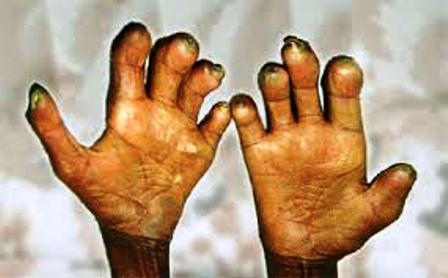-
NMA urges pragmatic collaboration towards elimination
Nigeria joined the rest of the world on Sunday to mark the 2023 World Leprosy Day amidst reports that the country is one of the 23 global priority countries that contribute 95% of the world’s leprosy burden, recording an average of 2,500 cases annually in the last five years.
The World Leprosy Day (WLD) is celebrated on the last Sunday of January. According to the World Health Organisation (WHO), This international day provides an opportunity to celebrate people who have experienced leprosy, raise awareness of the disease, and call for an end to leprosy-related stigma and discrimination.
The theme of World Leprosy Day 2023 is “Act Now. End Leprosy.” This year’s theme calls attention to three key messages:
- Elimination is possible: We have the power and tools to stop transmission and defeat this disease.
- Act now: We need the resources and commitment to end leprosy. Prioritize leprosy elimination.
- Reach the unreached: Leprosy is preventable and treatable. Suffering from leprosy is needless.
To commemorate the event, WHO called for the dissemination of the following facts:
- Leprosy is curable with a combination of antibiotics known as Multi Drug Therapy (MDT). This treatment is available for free across the world. If leprosy is not treated, it can lead to serious complications.
- Leprosy is at least 4,000 years old, making it one of the oldest diseases known to humanity. However, we believe we can be the generation that finally ends the transmission of leprosy – our target is to achieve 120 countries with zero new autochthonous leprosy cases by 2030.
- Leprosy still exists! Although around 200,000 people were diagnosed with leprosy each year before COVID-19, this number has fallen by 30% because of disruptions caused by the pandemic to leprosy programmes. Many millions are living with leprosy-related disabilities, particularly across Asia, Africa, and South America.
Meanwhile, the News Agency of Nigeria (NAN) reports that the Nigerian Medical Association (NMA) has called for pragmatic collaboration among stakeholders toward eliminating leprosy in 120 countries by 2030, in synchrony with the Sustainable Development Goals (SDGs) target.
The NMA President, Dr Uche Ojinmah, made the call in a statement by Dr Sebastine Oiwoh, the Chairman, National Committee on Neglected Tropical Diseases (NTD) of NMA, on Sunday in Ibadan.
Ojinmah joined the medical community in reiterating the need to “ACT NOW and END LEPROSY,” as enunciated by the theme of the 2023 World Leprosy Day.
The NMA president said that through pragmatic collaboration among stakeholders, it was possible to eliminate leprosy.
According to him, we have the power and tools to stop transmission and defeat this disease.
He said that the timely prevention or early diagnosis from the time patient had the painless skin discoloration would help prevent the disability which later occurs.
Ojinmah commended the effort made at controlling and eliminating leprosy, calling for more concerted efforts to meet the target of zero leprosy in 120 countries by 2030, in synchrony with the Sustainable Development Goals (SDGs) target.
“Through pragmatic collaboration among stakeholders, it is possible to eliminate leprosy, but the time to start is NOW as we have the power and tools to stop transmission and defeat this disease.
“Timely prevention or early diagnosis from the time patient has that painless skin discoloration will help prevent the disability that later occurs,” he said.
The NMA president said that there was need to prioritise leprosy, using the needed resources, commitment and the political will so that the unreachable could be reached.
He also stressed the need for sustained funding from the States and Federal Government to ensure adequate manpower as well as the availability of drugs at all times.
Ojinmah described leprosy as an ancient, stigmatising and infectious neglected tropical disease of man caused by Mycobacterium leprae.
He also described it as one of the oldest diseases of mankind that, in spite of the previous successes, had recently seen a downward global trend of diagnosis following the simultaneous COVID-19 pandemic.
“This caused a 30 per cent drop below the 200,000 people annually diagnosed with leprosy before COVID-19, according to the World Health Organisation (WHO).
“This disabling disease has plagued mankind for at least 4000 years through respiratory droplet infection as well as by prolonged contact.
“Depending on the burden of infection, it affects the lining of the upper respiratory tract, the skin, the peripheral nerves and the eyes, among others,’’ Ojinmah said.
According to him, it is not spread through casual contact like shaking hands or hugging, sharing meals, or, sitting next to a person with leprosy.
“However, it is curable and preventable, if adequate health education, early presentation to the hospital with prompt diagnosis followed by timely treatment initiation and adequate and sustained surveillance are ensured.’’

